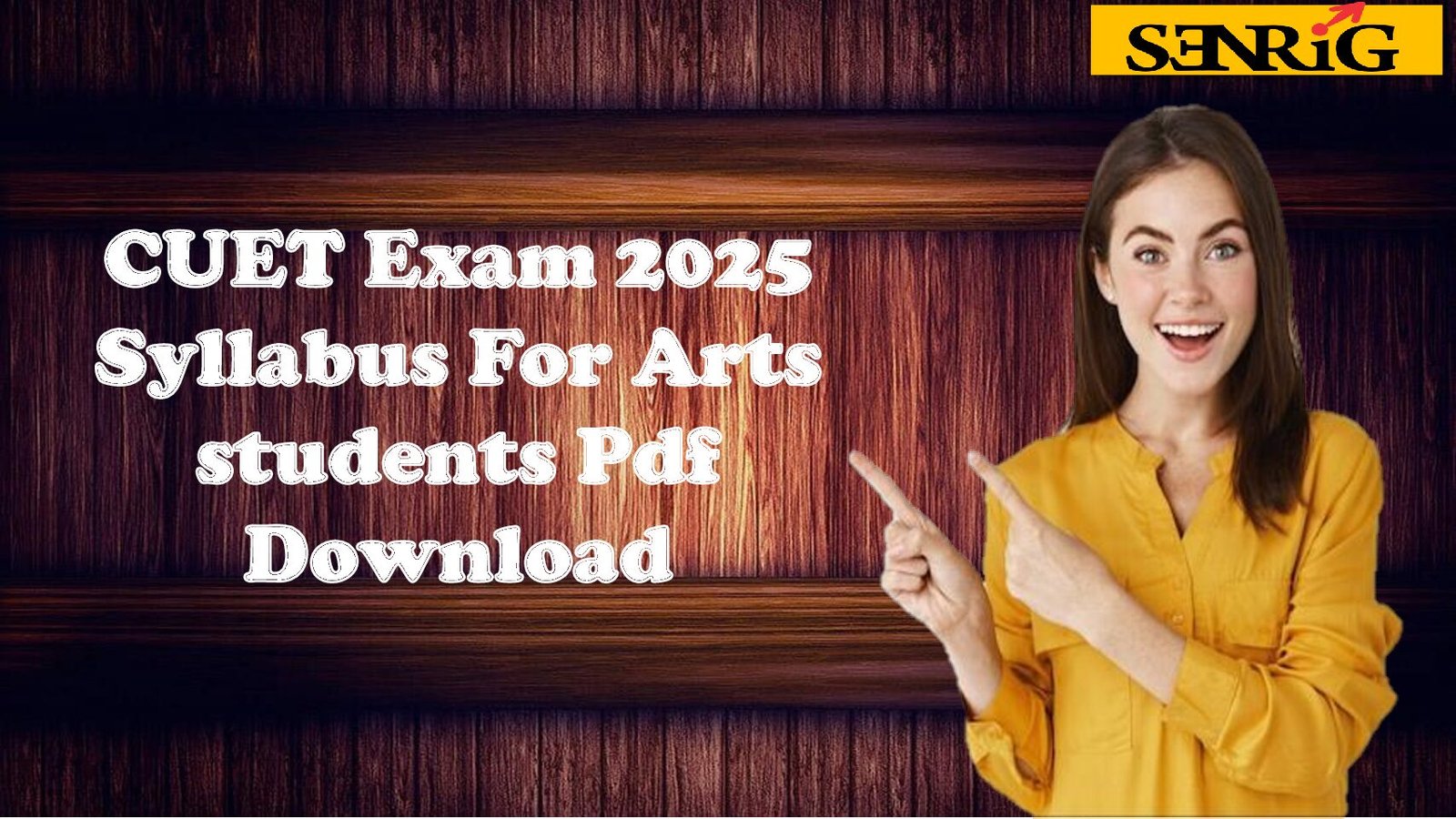CUET Exam 2025 Syllabus for Arts Students: An Overview
CUET Exam 2025 Syllabus For Arts Students Pdf Download A national entrance exam for admission to a variety of undergraduate programs at central universities throughout India is the Central University Entrance Test, or CUET.
This exam is essential for students studying the arts to get into esteemed universities that provide degrees connected to the humanities, including BA and BFA programs.
Understanding the comprehensive syllabus and studying appropriately are essential for achieving high scores on the CUET exam, which assesses applicants on a variety of courses based on their selected course and stream.
1. Structure and Format of the CUET Exam
The CUET exam is structured to assess candidates in various domains, including:
- Section IA (Language Test): This section evaluates the student’s proficiency in one of the 13 languages offered. Candidates can choose a language they are comfortable with, such as Hindi, English, or any regional language from the list provided.
- Section IB (Language Test): This section is similar to Section IA but allows students to choose a different language or the same one, depending on their preference.
- Section II (Domain-Specific Subjects): For Arts students, this section is critical. It includes topics from subjects like History, Political Science, Geography, Sociology, Economics, and other humanities-related areas. Each university and course may have different domain-specific requirements, so students must tailor their preparation according to the specific requirements of the course they are applying for.
- Section III (General Test): This section includes questions on general knowledge, reasoning, and analytical abilities. Arts students will need to prepare for basic logical reasoning, general awareness, and the ability to interpret data. The aim is to test the candidate’s aptitude and mental ability.
Detailed Syllabus Breakdown for Arts Students
Section IA & IB: Language Proficiency
Candidates can opt for various languages as per the syllabus. For the language proficiency sections, they will be tested on:
- Reading Comprehension: Ability to understand and interpret passages.
- Grammar and Vocabulary: Focus on syntax, word meanings, idiomatic expressions, and correct usage of tenses.
- Writing Skills: Testing the student’s ability to write clearly, coherently, and grammatically correct essays, letters, or short passages.
- Literature Questions: Some language sections also include questions from literature based on the syllabus of the chosen language.
Section II: Domain-Specific Subjects
For Arts students, the domain-specific subjects in CUET typically include the following:
- History:
- Ancient, Medieval, and Modern History of India.
- World History, including major revolutions and empires.
- Historical Sources, Archaeological Sites, and Periodization.
- Political Science:
- Indian Government and Politics, Constitution of India.
- International Relations and Global Politics.
- Political Theories and Ideologies.
- Geography:
- Physical Geography, including landforms, climate, and vegetation.
- Human Geography, including population, migration, and settlement patterns.
- Geographical Techniques, including map reading and interpretation.
- Economics:
- Microeconomics and Macroeconomics fundamentals.
- Indian Economy, Agriculture, and Industries.
- Current Economic Issues and Policy.
- Sociology:
- Sociological Theory and Foundations.
- Social Change, Stratification, and Institutions.
- Social Issues and Problems.
Section III: General Test
In this section, candidates are tested on their analytical and reasoning abilities, which is crucial for almost every student. Topics typically include:
- Quantitative Reasoning: Simple mathematics, such as percentages, ratios, and basic algebra.
- Logical Reasoning: Patterns, sequences, and problem-solving abilities.
- General Awareness: Current affairs related to national and international events, sports, politics, science, and culture.
- Numerical Ability: Basic data interpretation, graphs, and tables.
Key Preparation Tips for Arts Students
- Understand the Syllabus Thoroughly: The first step to success in the CUET exam is knowing the syllabus inside out. Make sure to go through the CUET 2025 syllabus, noting the topics that are most relevant to your chosen subjects.
- Make a Structured Timetable: Allocate time for each section—Language proficiency, Domain subjects, and the General Test. Create a balanced study plan that ensures equal attention to all subjects.
- Practice Previous Year Papers: Solving previous year question papers helps you get familiar with the exam pattern and the type of questions asked. It also boosts your time management skills.
- Refer to NCERT Textbooks: For most subjects like History, Political Science, Geography, and Economics, NCERT textbooks provide a comprehensive understanding and are aligned with the CUET syllabus.
- Current Affairs: Reading newspapers, magazines, and watching the news will keep you updated with the latest events. This is especially important for the General Test and the Political Science and Sociology sections.
- Revise Regularly: Regular revision is essential for retaining information. Set aside time each week to revise all subjects and ensure you are comfortable with your preparation.
Conclusion
To sum up, the CUET exam is a vital entry point for students studying the arts who want to get into India’s best colleges. Students can greatly raise their chances of success by fully comprehending the material, creating a well-thought-out study schedule, and practicing a lot.
Consistency, keeping abreast on current events, and concentrating on learning the domain-specific subjects that correspond with your selected course are crucial.
You may pass the CUET 2025 and start your academic career in the arts with the correct strategy, perseverance, and commitment.

